The Forest, Range and Wildland Division (S7) of the Soil Science Society of America prides itself on the quality of the papers that are presented in our division each year at the SSSA Annual Meeting. We feel that it is important to recognize and reward the outstanding papers presented in the S7 Division each year. To do this, members of the S7 Davison are asked to evaluate each of the oral papers and posters that are presented each year. Based on these evaluations, the best paper or poster in each session is selected.
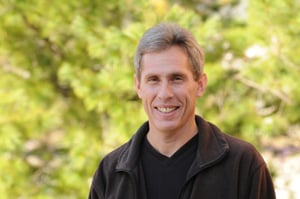
Associate Professor Andrew Burton’s paper, “Response of Fine Root Respiration and Root N to Soil Warming in Hardwood Forests,” was recognized as the best paper in Session 125 on General Forest, Range, and Wildland Soils.
It is a new semester, and the FRES bowling teams are looking for new “bodies” to replace bowlers that graduated, and help the rest of us worn down by overwork and too much studying!
We have two mixed (men and women) teams bowling at the Mine Shaft on Thursday evenings starting at 7:00 p.m.
There really aren’t any “regular” team members. Team members that bowl one week decide if they want to bowl the next week. If they don’t or can’t, we get a replacement from our team sub list. So you can bowl whenever you want.
The cost is $12 whenever you bowl. FRES bowling is for FUN and to have a good time! Looking at the current team members, it is obvious that bowling ability is NOT required.
For more information on joining these “finely-tuned” athletes, contact Chaz Perry, David Kossak, Lindsey Shartell, Jim Rivard, Mike Hyslop, or Marty Jurgensen.
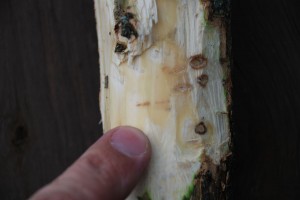
An article, written by Jennifer Donovan, featuring Professor Andrew Storer and his research on finding a natural solution to the Emerald Ash Borer crisis, was recently featured in Michigan Tech Magazine. Two tiny beetle-eating wasps may provide the method for eliminating the spread of the Emerald Ash Borer. Read more online.
From Sam Gardner’s online journal: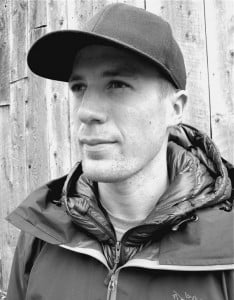
“On January 1st of 2011, I will set out on a 12,500+ mile “All-In Trek” to establish a new record of unassisted ultra-light long-distance backpacking. It will be the first ever, attempt of the “All-In Trek”. This involves solo hiking the four longest hiking trails in the United States, back-to-back continuously without any time off. I hope to finish in one year but it is my ultimate goal to complete this trek continuously regardless of a time frame. The journey of the endeavor is most important to me.”
Read more on Sam’s journal http://www.theinitiativesite.com/
| The Forestry Club and Xi Sigma Pi is hosting a firewood and Christmas tree fundrasier. Seasoned firewood will be available for $65 per face cord and will be available for pick-up or delivery (extra charge).
Christmas trees must be ordered in advance by 5 p.m., Friday, November 26, 2010. Tree pick up will be from noon to 7 p.m., Friday, December 10, or from noon to 5 p.m., Saturday, December 11, 2010 in the parking lot behind the U.J. Noblet Forestry Building off of Seventh Avenue. Tree Delivery is available for $7. For more information, or to order Christmas trees, contact Keri Deneau at kadeneau@mtu.edu |
PlanetGreen.com featured an essay published by Assistant Professor John Vucetich and his colleague at Michigan State, Michael Nelson, as one of its five tips for actio n on Earth Day. See tip four at Tips .
n on Earth Day. See tip four at Tips .
| by Jennifer Donovan, director of public relations
Frank Best, a 1975 forestry alumnus and middle-school science teacher at Menominee Catholic Central, is bringing two groups of sixth, seventh and eighth grade students to Michigan Tech for a hands-on science experience on Monday and Tuesday, Sept. 13-14. On Monday, they will take a learning cruise of Portage and Torch Lake and Lake Superior on the Research Vessel Agassiz. Each group will spend two hours on Tuesday in the lab, where the students will dissect lake trout stomachs and examine the water samples they gathered under a high powered microscope. They will use a guidebook to identify the algae in their water sample. They will also study the organisms they collect from bottom samples. Using all this data, they will construct a food web of the lake. This is the fifth year that Best has brought his students to Michigan Tech. After riding on the Agassiz himself during a summer course he took at Tech on “Using Navigation to Teach Math,” he decided it would be an ideal hands-on learning experience for his students. “One of my main goals as a science and math teacher is to expose students who use math and science in their jobs,” said Best. “I want students to understand that math and science are ways of looking at our world, not just classes that you have to take in school.” The teacher said his students gain a great deal of knowledge about the Lake Superior ecosystem from their time on the Agassiz. “They also get to experience so much more than I can show them in the classroom,” he added. “They get to use state-of-the-art equipment that we can not afford at our small school.” The Agassiz will make several stops to enable the students to measure the depth, temperature and dissolved oxygen of the lakes at different depths. They will also sample the mud on the bottom of the lakes to find out what might be living down there. They will use a plankton net to capture some of the members of the plankton community. While the students are at Tech, they will also see a MSE demonstration and visit Nara Nature Park as part of a SFRES program. The Menominee students will stay at St. Anne’s church in Chassell and St. Albert the Great church in Houghton. |
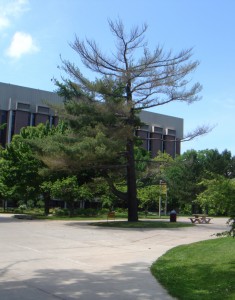
When the Leaning Tree, also called the EERC Tree, was cut down in August, the question was: which was older, the campus or the tree? The campus dates back to 1887, when Jay Hubbell donated land for the Michigan College of Mines; it turns out the tree is older by sixteen years, says Mike Hyslop, GIS analyst and a doctoral student in forest science, SFRES.
Recall that Facilities cut a slab, called a “cookie,” for Hyslop, so he could determine how old the tree was by counting the rings. Each annual ring is composed of two parts–“early” and “late” wood–with different color and structural characteristics.
By Hyslop’s count, it is likely that the Leaning Tree, a white pine, took root–Hyslop says “was established”–in 1871.
This is dendrochronology: the dating of wood. Trees add both height and diameter annually. The radial growth exhibits patterns that vary primarily according to precipitation and temperature, but also light availability and disturbance.
Typically, warm temperatures and plentiful precipitation produce wider rings; and cooler, drier conditions produce narrower rings. Missing rings occur in “high ecological stress” years, when the tree does not have the resources to put on radial growth.
To age the Leaning Tree, Hyslop sanded the slab because chain saw blades produce a fairly rough surface, and the rings are difficult to discern, especially when there are several small-growth years in a row and the rings are closely spaced.
To date the tree back to 1871, Hyslop counted the rings twice by hand, under magnification, and came up with the same result. He will do some additional sanding and recheck his findings.
“I am reasonably confident,” he says, “that the 139 years is correct, but there are a few areas of densely-packed rings that bear closer scrutiny.”
The tree, then, was witness to the entire history of the institution to date. Hubbell donated the land, the site for the first campus building, Hubbell Hall, on Aug. 26, 1887. The local newspaper, in a modest story, announced the donation five days later, on Sept. 1, under a small headline reading “Our Mining School.” It read, in part, “This site seems to us to be in every way adapted for the Mining School. The drainage is perfect, it will be in a pleasant neighborhood, with fine views up and down the lake, and of the opposite shore. There are numerous other sites in town which could have been obtained, but it seems to us that the committee [Board of Control], in deciding to accept the one presented by Mr. Hubbell, have acted wisely, and that the people will be fully satisfied.”
The tree outlived the Hubbell building, which was demolished in 1970, by 40 years.
Another white pine will be planted in its space. The history it will witness? Only time will tell
| by Alanna Knapp, student editor
Professor Blair Orr (SFRES) has received the 2010 Distinguished Teaching Award in the associate professor/professor category. He is singled out especially for directing Tech’s Peace Corps Master’s International Program, which allows students to combine two years of Peace Corps service with a graduate degree program. Involving eight disciplines, Michigan Tech has the largest number of Master’s International programs nationwide at one university. Orr earned a PhD in Forestry Economics from the University of Wisconsin-Madison and came to Michigan Tech in 1992. From the start, he taught economics and began the University’s first Master’s International program, forestry, in 1995. He became the director all eight programs in 2006. 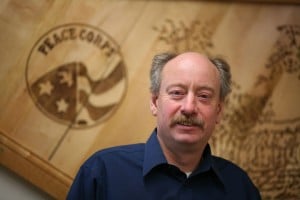 “Blair brings to the University his creativity, his time, a passion for international programs, and, most importantly, a commitment to students’ success,” said Dean Margaret Gale. Students returning from the field tell Gale that they are well-prepared for their service. “They are confident,” she said, “and, with Blair’s guidance and influence, prepared for service abroad.” Less than three percent of Michigan Tech students leave the program, compared to one-third nationally. Gale attributes that commitment to Orr’s dedication. Students say that success in the field begins in Orr’s classroom. “He prepares students to deal with the challenges of life in a developing country,” one student said. “He exposes them to the main issues they will encounter–teaching them to critically examine issues, and helping them develop the ability to find more information about these issues when the need arises overseas.” Another student surmises that Orr is “possibly the best Peace Corps Master’s International director in the country.” Other students describe him as “an excellent teacher who is both knowledgeable and able to effectively transfer this knowledge to his students. He uses homework methods that make students connect their lives to what is being learned in class.” For his part, Orr says that the course material for these master’s students is more than just interesting information. “The success in the class and abroad,” he says, “depends upon students’ ability to understand and assimilate these lectures and readings in the field.” Therefore, he emphasizes, in part, class participation in discussions and writing. “I require students to keep a journal. When they write about the course topics–dealing with politics, corruption, community involvement–it helps to assess their comprehension.” Directing such an endeavor engages him. “I am involved from the moment they apply to the program until graduation,” he says. Sometimes their lives are arduous. He has one student who has to travel 20 miles to access the Internet. What he enjoys most is interacting with these students in the field. “Some days they are excited and enjoying the work,” he said, “and the next day they are depressed and need encouragement.” This understanding coach and mentor concludes, “Because I served as a Peace Corp volunteer, I am able to identify with their experiences.” |